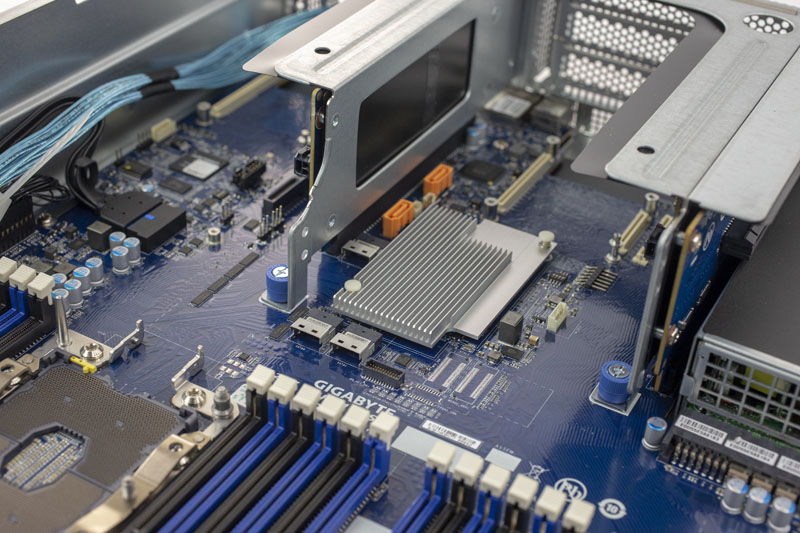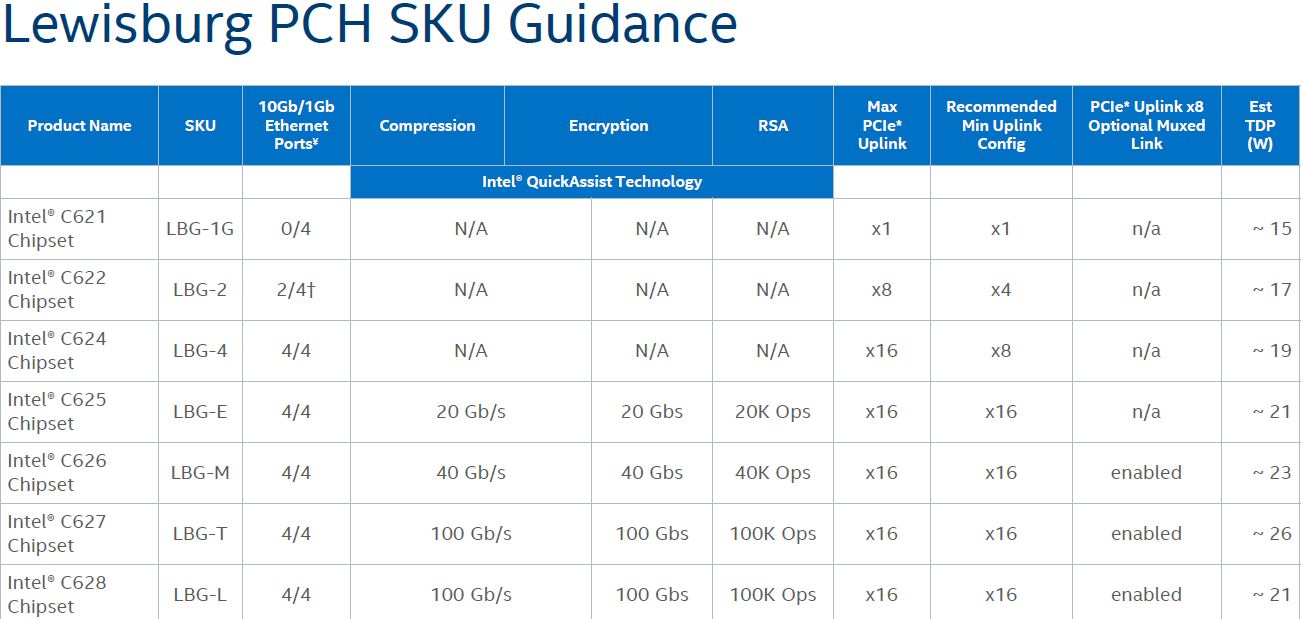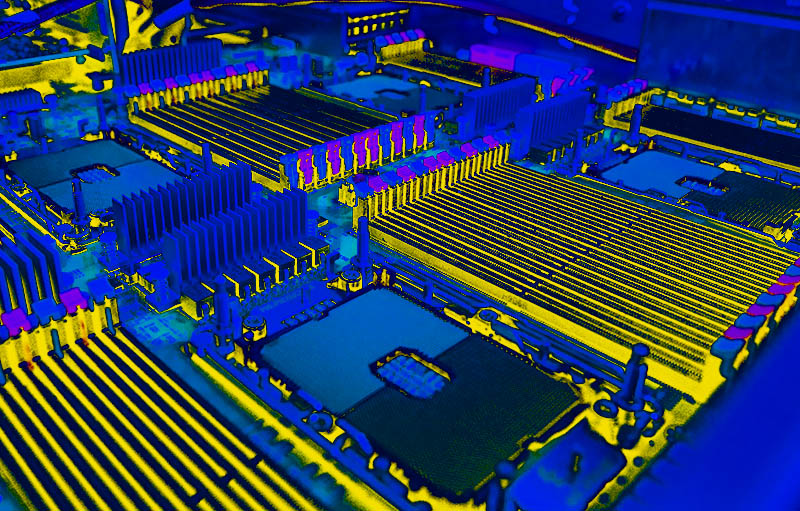3rd Generation Intel Xeon Scalable PCH: Lewisburg Refresh
There is a brand new Lewisburg platform controller hub (PCH) with a different feature set and SKUs. Now, the Intel PCH is quickly becoming a relic. New Arm server designs incorporate PCH functionality, as do AMD EPYC designs. The extra PCH is one reason Facebook had to do a Yosemite platform refresh just to use these in single socket designs because each node has a PCH to place on a PCB and cool.

The new PCH’s are called LBG-R or Lewisburg Refresh chips. The “refresh” trend is in full swing at Intel. First, we had the Big 2nd Gen Intel Xeon Scalable Refresh followed quickly by an Intel Atom C3000 Line Quietly Refreshed. Now, we have Cascade Lake Refresh Refresh, or Cooper Lake with a refreshed PCH, Lewisburg Refresh.
At STH, in 2017 we had a piece that focused on the Burgeoning Intel Xeon SP Lewisburg PCH Options Overview. The Lewisburg or “LBG” PCH itself launched in mid-2017 with Skylake Xeons. You will notice that there were a ton of SKU options with many different features.

With the Cooper Lake 3rd Generation Xeon Scalable series, we get a refreshed PCH that Intel is dubbing the “Intel C620A” chipset series. Intel was fairly light on details during the LBG-R / C620A launch, but there are three new SKUs. These SKUs are for Cooper Lake as well as Whitley platforms. That means the C620A/ LBG-R will be the PCH’s of Ice Lake Xeons unless plans change.
It turns out that having integrated 10GbE LAN was useful, but the thinking has changed at Intel. Removing 10GbE support means that Intel can provide a lower power PCH. Also, the 10GbE networking is X722 or 700 series in the Lewisburg PCH which does not mesh with the PCIe Gen4/ Ice Lake/ Whitley era of 800-series or E810 networking. As a result, LAN is removed.
SKUs in this generation are effectively only three, largely because of the networking rationalization. The SKUs are:
- Intel C621A with no QAT
- Intel C627A with QAT (100Gbps encryption, 65Gbps compression, and RSA acceleration of 100K operations per second)
- Intel C629A with QAT (100Gbps encryption, 75-80Gbps compression, and no RSA acceleration)
PCH 10GbE networking was popular in China and other markets where there are major segments that wanted 10GbE at the lowest cost possible.
From a platform perspective, Intel did not go into detail here, but there is a small set of new RAS features added over Cascade Lake. The big change will be with Ice Lake and Whitley. That will be important as Intel introduces even more new security features.
Final Words
This is a fascinating launch indeed. On one hand, we have the new Intel Xeon Cooper Lake generation that is bringing bfloat16 and a large UPI footprint. There are also some smaller platform features along with a big bonus for App Direct 4-socket customers. This platform will be with us for some time as well as the next 4-8 socket platform will be Sapphire Rapids in 5-6 quarters if it stays on schedule.
At the same time, in two quarters, the Ice Lake Xeon chips that will offer much higher per-core performance, more cores per chip with higher TDP, more PCIe lanes and PCIe Gen4, more memory channels and memory/ per CPU, memory encryption, Optane PMem 200 in Memory Mode, a slew of RAS features security enhancements and more arrive. There is a case to be made that unless you are in dire need of a top-bin 4-socket platform today, waiting six months may net you similar performance in the next-gen 2-socket platform.
Adding another twist, with the lack of Memory Mode support, there are some customers who will be better off using existing 4-socket servers with 512GB DCPMMs (PMem 100) in Memory Mode and skipping the new Copper Lake Xeon platform entirely. Memory costs a lot and the existing 4P systems are now well-known quantities which can make it hard to switch if the cost of memory does not outweigh the UPI benefits.

One may point to the new launch and rightfully state that even with the new Cooper Lake 4-socket platform AMD EPYC 7002 “Rome” 2-socket still has more cores and more PCIe bandwidth. That is accurate, but Intel is offering more memory bandwidth and 250W TDP per socket which means these chips can use twice as much thermal headroom as the AMD part. That is a strange statement, but it helps turbo clocks.
For the Intel Xeon Platinum 9200 family, the market is now even smaller. Technically those are Intel’s highest per “socket” CPUs, but now with higher TDPs, bfloat16 and Optane PMem 200 in App Direct mode support the market for such chips is going to be even smaller. For a segment of Platinum 9200 buyers, the new Cooper Lake systems are a far better option.
Perhaps the most interesting part of the launch is that we get to see an intermediate generation. Intel has long touted its portfolio of solutions and we get to see some of them either enabled or set up by the new 3rd generation Intel Xeon Scalable. In a way, we are getting a view into the slingshot of technological advancement that is about to come our way as we move later into the year. Competition is a good thing. Cooper Lake and Cedar Island are clearly a stopgap step. We at least get a view into a greatly accelerated future which will be very exciting.




Why doesn’t anyone else have info on the PMem 200 in memory mode that you’re talking about on page 3. STH is the only place reporting that.
Fred we confirmed this with Intel before the piece went live. To be fair, it was very hard to figure out based on what Intel released in their materials.
This is the most in-depth coverage of Cooper I’ve seen. There’s crazy detail here. excellent work Patrick and STH
Does anyone know what the “MOQ” refers to in the Optane specs, the values (4 and 50) align with the existing Optane DIMMs but could never find what it referred to.
Thanks
“a stopgap step”
From the processor king that has been pumping $Bs Q after Q?
AMD for pumping out products, but Intel for pumping in $$$…
@binkyto… MGTFY.com. OH what help a google could be. MOQ typically refers to Minimum Order Quantity. however…if you had actually googled “Optane” + “MOQ”, without the quotes of course, you’d have come to this link:
https://ark.intel.com/content/www/us/en/ark/products/190348/intel-optane-persistent-memory-128gb-module.html
wherein it says:
Intel® Optane™ Persistent Memory 128GB Module (1.0) 4 Pack
Ordering Code
NMA1XXD128GPSU4
Recommended Customer Price
$1499.00
Intel® Optane™ Persistent Memory 128GB Module (1.0) 50 Pack
Ordering Code
NMA1XXD128GPSUF
Recommended Customer Price
$1499.00
4 pack and 50 packs. they have different sku’s. you’r welcome.
Isn’t MOQ minimum order quantity BinkyTo?
Nice writeup STH.
That Optane PMem 200 I’ve read Anandtech, Toms, and nextplatform and none of them mentioned it in their articles.
Fire.
Keep cutting through the marketing BS at these companies.
Can’t wait to see how it stacks up with the exiting parts and Epyc 7xx2
The use of place names to distinguish these products creates confusion. Reading articles about Intel CPUs requires one to have a decoder ring handy.
Intel should stop being obscurantist.
Is the TDP 15W or 18W? If you go to their site it still mentions 18W.
Also some of their datasheet still mentions the specs for the 100 series. Like here: https://www.tomshardware.com/news/intel-announces-xeon-scalable-cooper-lake-cpus-optane-persistent-memory-200-series
Will the rated 8.1GB/3.15GB R/W bandwidth improve with the Icelake platform? Why does the datasheet say it supports up to 2666MT/s?
Intel got hurt bad by their 10nm process. The delays that caused allowed AMD to leapfrog. The question now is who will be first to market with PCIe Gen 5. That will be an enormous advantage in the server space.
I love competition. I really do.
I’m going to have to dig into this further tomorrow, but what has really caught my eye this week is working Sapphire Rapids chips in Intel labs. Sapphire Rapids is supposed to have both DDR5 and PCIe 5, and they are targeting a 2021 release. The reporting on AMD’s roadmap that I have seen has Genoa and the SP5 socket (with DDR5 and PCIe 5) coming out in 2022. I wonder how many months Intel powered servers will have those features before AMD’s get them? DDR5 looks like a huge upgrade. I thought AMD’s technical dominance in servers would last a couple more years, I might have been wrong.
@Wayne Borean: From a business point of view, Amd has done nothing to really stress Intel as regards profits/revenue over the last 3 years since Epyc has been on the market. Most of the marketshare that Epyc has gained over the last 3 years is miniscule when you look at the revenu/profit that Amd earns from Epyc.
If Amd cannot compete on a volume basis with Intel when Zen 3 come out, Intel will continue to dominate in the only ONE true area that counts for any business: increasing revenue/profits over your competitors
Amd has amazing performance compared to Intel but at what cost??
Once Ice Lake server comes out in volume then and only then will we see a head to head competition and based on the last 3 years when Amd clearly had the performance lead, it does not look too good for Amd in the server space!!!